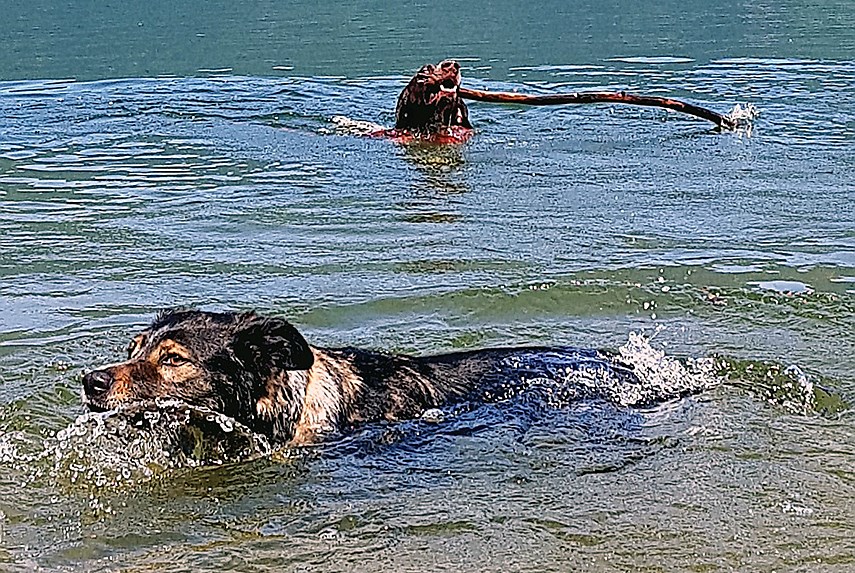Over the summer I spent a great deal of time travelling through the Interior of our beautiful province. Much of the time I hiked with my dogs through provincial parks, and all of the time my dogs remained on leash.
I also participated in guided hiking tours without my dogs where I learned how to stay clear of rattlesnakes, bears and cactus. I learned about the delicate balance between wild animals and our ecosystem and how our dogs are causing problems by disrupting that balance due to being allowed to chase wildlife and tread though sensitive areas.
I was also disappointed by dog owners, yet again, when a series of summit trails in Revelstoke had been deemed off limits due to “Non-compliance with dogs on leash regulations.”
You see, dog owners were letting their dogs off leash along trails and allowing their pups to chase wildlife, specifically a grizzly. This wasn’t one incident but so many that Parks Canada closed parts of the park
to dogs.
I didn’t think my frustration with these dog owners who are ruining the outdoor experience for us responsible, respectful ones could get any worse until I read an email from one of the North Shore Streamkeepers asking for help because dogs are running through sensitive salmon spawning habitats in local creeks.
“Sigh-expletive-expletive-sigh.”
North and West Vancouver have numerous spawning locations for salmon. Brothers, Hasting, Mosquito and Lynn creeks as well as Capilano and Seymour rivers are all spawning hot spots and Mosquito Creek has recently undergone a restoration to bring it back to a more natural state to improve the spawning and rearing areas for salmonids.
And lets not forget the extensive efforts made to the Seymour River after the rockslide to make way for salmon to continue their journey. A lot of people are working very hard to assist salmon along their life cycle because they understand how vital salmon are to the ecosystem.
What does any of this have to do with dogs?
Well, allowing dogs to play in these spawning estuaries disrupts not only the fish trying to complete their life cycle but it destroys the spawning habitat the fish rely on to make nests for their eggs.
Allowing dogs to chase spawning salmon creates undue stress on the fish and may prevent them from laying their eggs or prematurely dying due to the stress. Additionally, there is a charge for molesting spawning fish under the B.C. Wildlife Act and the Fisheries Act for harassing wildlife. Salmon and all fish are considered to be wildlife. Both the federal and provincial acts cover any person or dog harassing fish or chasing fish.
Now you might think your dog is not causing any trouble, because it just wants to go for a swim. And if your dog was simply dipping its toes into the water’s edge to get a drink there probably would be no impact whatsoever on the salmon spawning areas. But it is not just your dog. It is the cumulative effects of the 20 more dogs that came before your dog and the 20 or more that will follow.
In Kelowna, dogs are required to remain on leash along specific tra\ils from September through May to prevent dogs from treading though spawning habitat.
To combat a similar problem in Salmon Arm, dogs are not permitted along the foreshore trail which parallels south Shuswap Lake through a bird sanctuary, during the bird nesting season of May to the end of June because dogs disrupt the birds nesting in the tall grasses and along the water’s edge. Dogs are allowed back along the trail after nesting season but must remain on a leash limited to two metres in length. Heavy fines are issued for non-compliance.
Maybe it’s time for similar regulations to be adopted on the North Shore?
Or how about we all make a concerted effort to just be more aware and responsible of our dog’s behaviour and impact on the environment, wildlife and people around them!
You can start by rolling up your sleeves and volunteering with the streamkeepers and witness firsthand the efforts they are undertaking as well as the fragility of the environment and the obstacles the salmon must navigate.
Joan Klucha has been working with dogs for more than 20 years in obedience, tracking and behavioural rehabilitation. Contact her at k9kinship@gmail.com.



